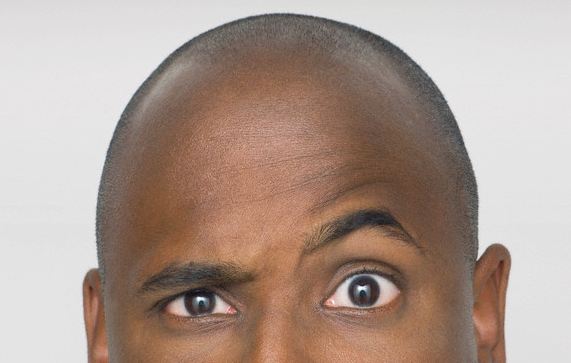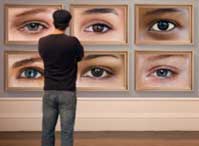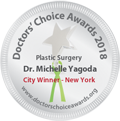
Types of brow lifts
There are four basic methods that are distinguished by where the placement of the incision. Each one has its advantages and disadvantages. The right choice for you will depend on many factors including how you wear your hair, your hairline, and what trade-offs you’re willing to make. For example, are longer-lasting results worth a more significant scar if the scar is easily concealed? Dr. Yagoda will help guide you through your options and arm you with all the information you need to make an informed decision.
Transcoronal
In this method, Dr. Yagoda makes an incision in your hairline across the top of the scalp to manipulate the muscles responsible for scowling and wrinkles. Excess skin is removed and the scalp is sutured shut.
Advantages: The scar is well concealed behind the hairline and the results are long lasting.
Disadvantages: Because this technique raises the hairline, it might not be suitable for you if you have a high hairline to begin with or if you’re a man with a receding hairline. Women with thin hair and men with thinning or balding will be unable to hide a transcoronal scar. Also, you may experience numbness on the top of the head near the incision that may last for about six months.
Endoscopic
Instead of one long incision, there are several short (about one inch) incisions behind the hairline. Dr. Yagoda inserts a tiny camera through these incisions to visualize the tissues and do most of the work involved in a transcoronal brow lift. Because she doesn’t have the full access to the muscles that she would have in a transcoronal procedure, she may not be able to eliminate the muscle action completely. In the endoscopic procedure, excess skin isn’t cut away, but it is pulled up and back. The loose skin is secured with small screws or sutures that are either removed or absorbed by the body.
Advantages: The small scars are hidden behind the hairline. There is generally no numbness and the less invasive surgery can result in a faster recovery.
Disadvantages: Like the transcoronal procedure, the endoscopic technique raises your hairline, making it potentially unsuitable for some patients. Because the endoscopic technique doesn’t excise skin, there’s a risk that the brow might relapse and droop over time—a risk that is made more likely if you had really droopy brows and deep creases to begin with. Finally, because the endoscopic technique is more time-consuming, it’s more expensive than other methods.
Subcutaneous Hairline Incision
In this technique, the incision is placed just below the hairline. Like the transcoronal procedure, excess skin is removed and all the muscle manipulations can be performed through this incision. All of the muscle alterations that are performed through a transcoronal lift are also possible through this operation.
Advantages: Because of the incision placement, this technique does not result in a higher hairline. There is minimal numbness and the results are long lasting.
Disadvantage: Because the scar is below your hairline, you’ll need to wear your hair forward or have bangs in order to completely conceal it. If you’re going to need to wear your hair forward anyway, you might want to consider other procedures, like the endoscopic and transcoronal methods. Yes, your hairline will be higher, but if you’re wearing your hair forward anyway, does that matter?
Brow Crease Incision/Direct Brow Lift
In a method that’s often used with male patients with a receding hairline or thinning hair, the incision is hidden inside a prominent mid-forehead horizontal crease. The same method can be used with older female patients who have forehead creases and don’t mind keeping them. Skin excision and muscle manipulation are performed with this technique.
Advantages: This method can be performed under light sedation and there is minimal numbness associated with it. The results are lasting.
Disadvantages: The scar is hidden within the horizontal crease but may be noticeable. Makeup can help camouflage the scar.
Recovery
The recovery period from a brow lift depends not only on the individual patient but also on the surgical method that was used. In general, however, recovery takes about a week and most patients can return to work after that first week. Stitches are usually removed after 10 days.
Risks
As with all surgery, a brow lift carries certain risks including infection, bleeding, and complications resulting from anesthesia. In addition, a brow lift can cause hair loss, scarring, and a loss of sensation. Dr. Yagoda will discuss in detail all of the risks and benefits of this procedure to help you determine if it might be right for you.
Read about Dr. Yagoda’s Integrative Post Operative Care Program
Flying In
From Quebec to Qatar, Dr. Yagoda’s patients come to New York City from all over the world. Find out how we can help you get here from abroad.


































